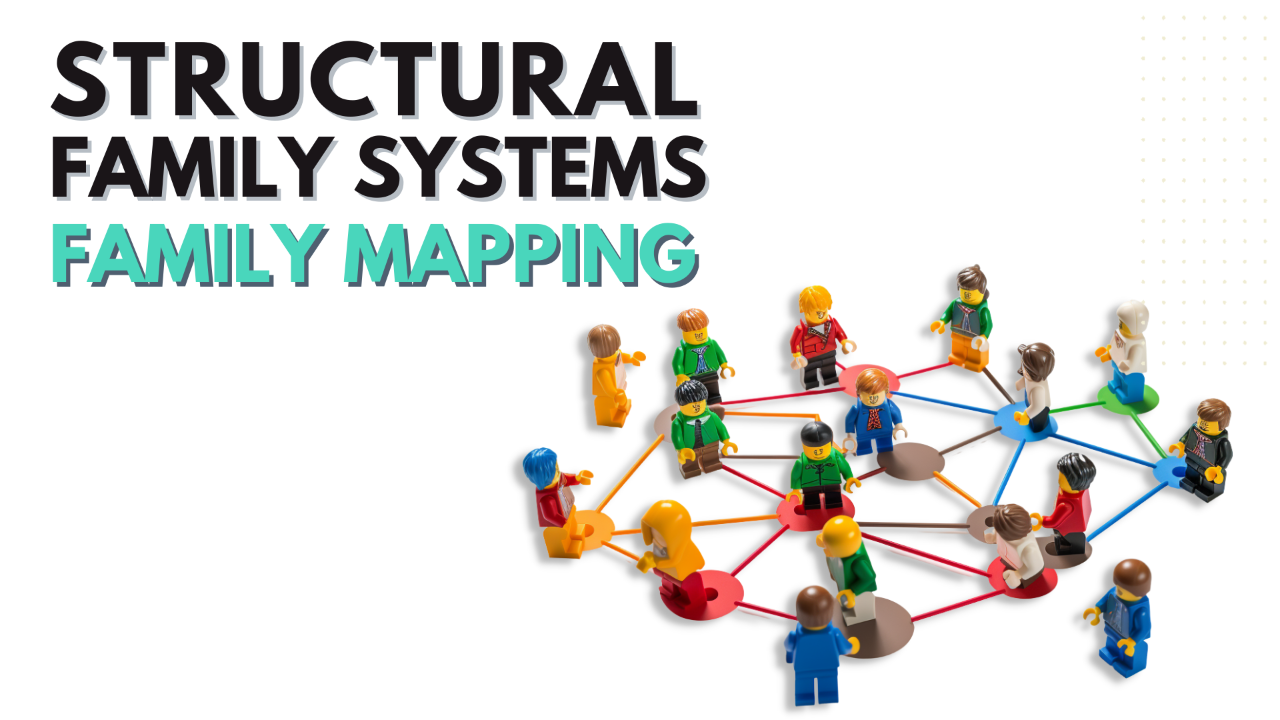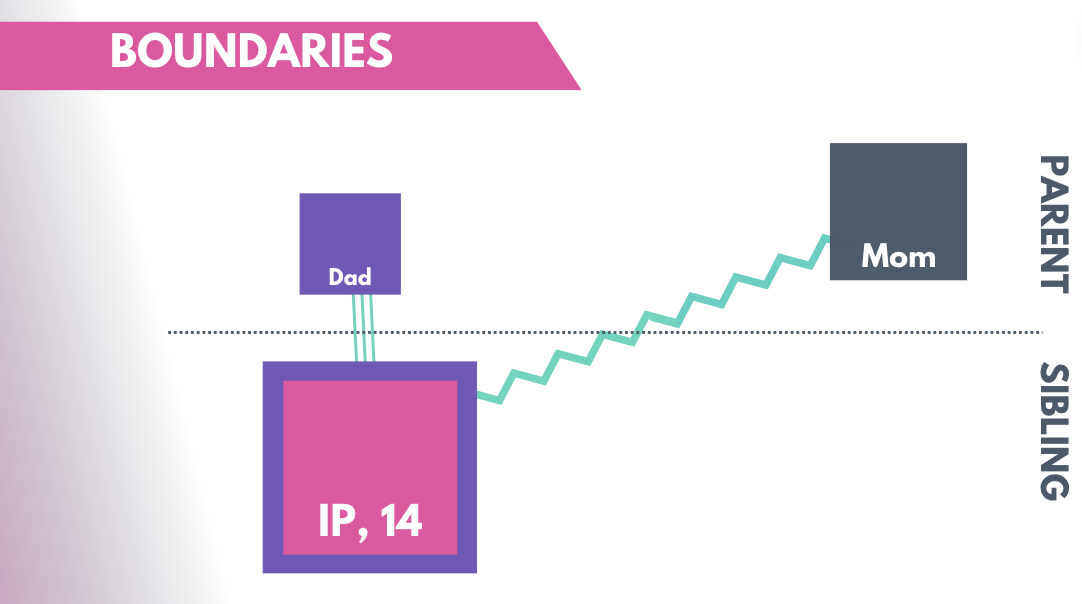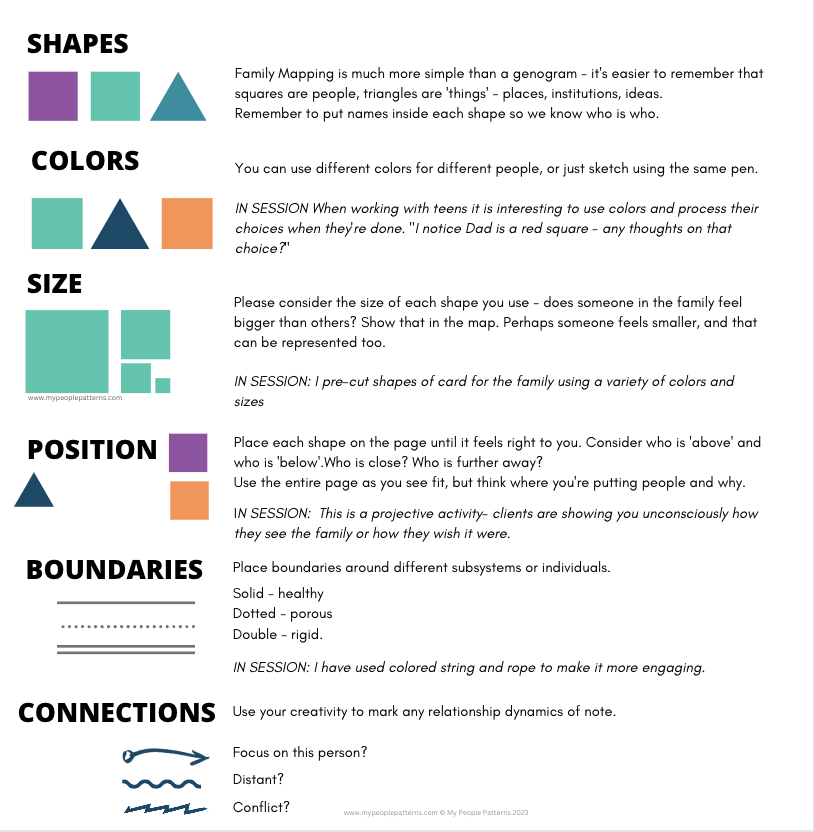Use Structural Family Therapy Mapping To Enhance Sessions
Jul 31, 2023
Use Structural Family Therapy Mapping To Enhance Sessions
This is one of the most useful and powerful techniques that comes from Salvador Minuchin and Structural Family Systems. It's essentially a diagram that represents a snapshot in time of a family, as they present when they come to see a therapist, ideally, it captures the rationale around any problematic behavior or issues they are having outside therapy.
I've got a new Structural Family Systems Theory Training Course that you should check out here. It breaks down what I do as a family systems therapist in my first few sessions and
Unraveling the Art of Creating A Structural Family Therapy Map: A Beginner's Guide
Imagine your clients as a beautifully complex web where each member is interconnected, their relationships and roles weaving together to form the fabric of your unit. Now, visualize this as a map or a sculpture, where each individual is a unique landmark or a distinct piece of art. Welcome to the fascinating world of Family Therapy Maps
This is a therapeutic technique designed to help you and families visualize, comprehend, and navigate the dynamics of relationships. It's like having a GPS for a the emotional landscape because it points you in the direction of goals, treatment plans and interventions.
For more Family Systems Therapy concepts and courses check out our store:
But What Is A Family Map?
At its most basic, a map consists of boxes or squares representing people. The entire space of the paper is your canvas. The placement of the boxes and the lines connecting them represent relationships. The size of the boxes can represent power or influence within the family.
Creating Your Family's Emotional Landscape
The journey begins by defining the space. You can do this alone or you can use this as a family therapy activity and have your clients do this to conceptualize the complex dynamics. They do this using distance not in terms of physical space, but a metaphorical one. This space represents the emotional and relational territory the family inhabits, a realm where feelings and interactions take precedence over physicality.
You can use a piece of paper, the coffee table in your office, or one of those enormous Post-It Notes you use for brainstorming in-office meetings. I've used wooden blocks, post-it notes, post-cards and playing cards before - be creative and have fun!

Placing the Landmarks: Adding Family Members
Next, you'll start populating this space with representations of each member. Whether you choose objects or drawings, use each representation as a landmark in the emotional landscape. As you place each member, you're going to think about where they are in relationship to each other, AND the space you're using. If you're doing this for yourself as part of a conceptualization, think about what you have OBSERVED about the clients over what they tell you. A family can't easily tell you about their dynamics or structure, it comes from your experience.
Power and Hierarchy
If you're using pen and paper you can get creative with the size of the squares you're using for each person.
Map the Routes: Exploring Relationships
With all members in place, it's time to explore the routes connecting them. This stage involves examining emotional bonds, conflicts, and other facets of the relationships. It's like tracing the roads and pathways on a map, each one revealing a different aspect of your family's relational dynamics.
For more Family Systems concepts and courses check out our store:
The Role of Boundaries in A Family Map
Structural Therapy is big on boundaries. In a map, boundaries represent the rules of engagement within the family. For example, in a live lecture scenario, the speaker and the audience have different roles and rules, represented by clear boundaries on the map. We would want a clear boundary between parents/caregivers and youth.
Decoding the Map: Discussion and Analysis
Once your Structural Family Therapy Map is complete, you can embark on a journey of discussion and analysis. This exploration can lead to profound insights about the family patterns, any dynamics you have noticed and help you get clearer on understanding the family unit.
The map is an assessment of the clients and a way to determine its structures - it's an intervention that helps you identify goals and create a treatment plan.

What types of research has been conducted to support the effectiveness of a structural family map?
Structural family therapy (SFT) maps are a therapeutic approach that focuses on understanding and modifying the underlying structure of a family. This technique has been studied extensively to assess its effectiveness in improving family functioning and resolving issues within the family unit. Various types of research have been conducted to support the effectiveness of SFT maps including:
1. Outcome Studies: Several outcome studies have been conducted to evaluate the effectiveness of SF Therapy maps. These studies typically involve assessing the changes in family dynamics, communication patterns, and overall functioning of the clients before and after receiving SFT map interventions. The results of these studies consistently demonstrate significant improvements in family functioning and symptom reduction following SFT interventions.
2. Randomized Controlled Trials (RCTs): RCTs are considered the gold standard in research methodology and have been used in SFT map studies. These studies randomly assign clients to either receive SFT interventions or alternative treatments (such as individual therapy or no treatment). By comparing the outcomes of the different groups, researchers can determine the specific effects of SFTmaps. RCTs have shown that SFT maps are more effective than alternative treatments in addressing various family issues, such as marital conflicts, parent-child relationship problems, and mental health concerns.
3. Qualitative Studies: Qualitative research methods, such as interviews and case studies, are often employed to explore the experiences and perceptions of families who have undergone SFT. These studies provide valuable insights into the subjective experiences of the entire unit and highlight the effectiveness of SFT diagrams in their own words. Qualitative studies have consistently shown that families perceive SFT sketches as a helpful and effective approach in improving their relationships and resolving conflicts. These studies highlight the importance of exploring the unique experiences and perspectives of families to gain a comprehensive understanding of the effectiveness of SFT diagrams in a therapy session.
In addition to these research methods, meta-analyses have also been conducted to further evaluate the effectiveness of SFT diagrams. Meta-analyses involve combining the results of multiple studies to provide a more comprehensive and statistically significant assessment of the treatment's effectiveness. These meta-analyses have consistently shown that SFTmaps are a highly effective therapeutic approach in improving family functioning and addressing various issues within the family system.
Overall, the research conducted on SFT has consistently demonstrated its effectiveness in improving family functioning, resolving conflicts, and enhancing communication within the family system. The combination of outcome studies, RCTs, qualitative research, and meta-analyses provides a robust body of evidence supporting the efficacy of SFTM. These research findings not only validate the use of SFTM as a therapeutic intervention but also highlight its potential to bring about positive changes in family dynamics and relationships.
What are the benefits of structural family therapy maps?
A structural family map is a powerful tool that helps therapists and families gain a comprehensive understanding of family dynamics and relationships. It offers several benefits that can contribute to effective therapy and positive outcomes. Here are some of the key advantages of using structural family therapy maps:
1. Visual representation: SFTMaps allows families to see and understand the patterns and structures within their relationships. By creating a visual representation, such as a genogram or a family map, it becomes easier to identify the roles, hierarchies, and boundaries within the family system. This visual aid can help family members gain new insights and promote a shared understanding of their dynamics.
2. Systemic perspective: This approach considers the family as a whole system, rather than focusing solely on individual members. SFTMaps helps identify how each family member contributes to the overall functioning of the system. By examining the interactions and connections between family members, therapists can uncover underlying issues and work towards creating healthier patterns of interaction.
3. Problem identification: The diagraming techniques can effectively highlight problematic patterns or structures within the family system. By visualizing these dynamics, therapists can pinpoint areas that need attention or change. This can help families identify and understand the root causes of their issues, allowing them to work towards resolving conflicts and improving communication.
4. Targeted interventions: With a clear understanding of the family structure and dynamics, therapists can develop targeted interventions that address specific issues within the system. By focusing on changing interactions and restructuring relationships, SFTMAps canhelp families develop healthier patterns of communication and behavior. This targeted approach can lead to more effective therapy and positive changes in family dynamics.
5. Empowerment and collaboration: SFTMaps encourages collaboration and active participation from all family members. By involving the entire family in the creating process, it empowers them to take ownership of their roles and responsibilities within the system. This collaborative approach promotes a sense of shared responsibility and encourages family members to work together towards positive change.
6. Long-lasting results: By addressing the underlying structures and patterns within the family system, SFTMaps can lead to long-lasting results. By identifying and resolving dysfunctional dynamics, families can build stronger relationships, improve communication, and develop healthier coping mechanisms. This can contribute to improved overall family functioning and lasting positive changes.
SFTMaps are a valuable tool that offers numerous benefits in therapy. It provides a visual representation of family dynamics, helps identify problematic patterns, allows for targeted interventions, encourages collaboration, and can lead to long-lasting results. By utilizing this approach, therapists can effectively support families in creating positive changes in their relationships and overall family dynamics.



